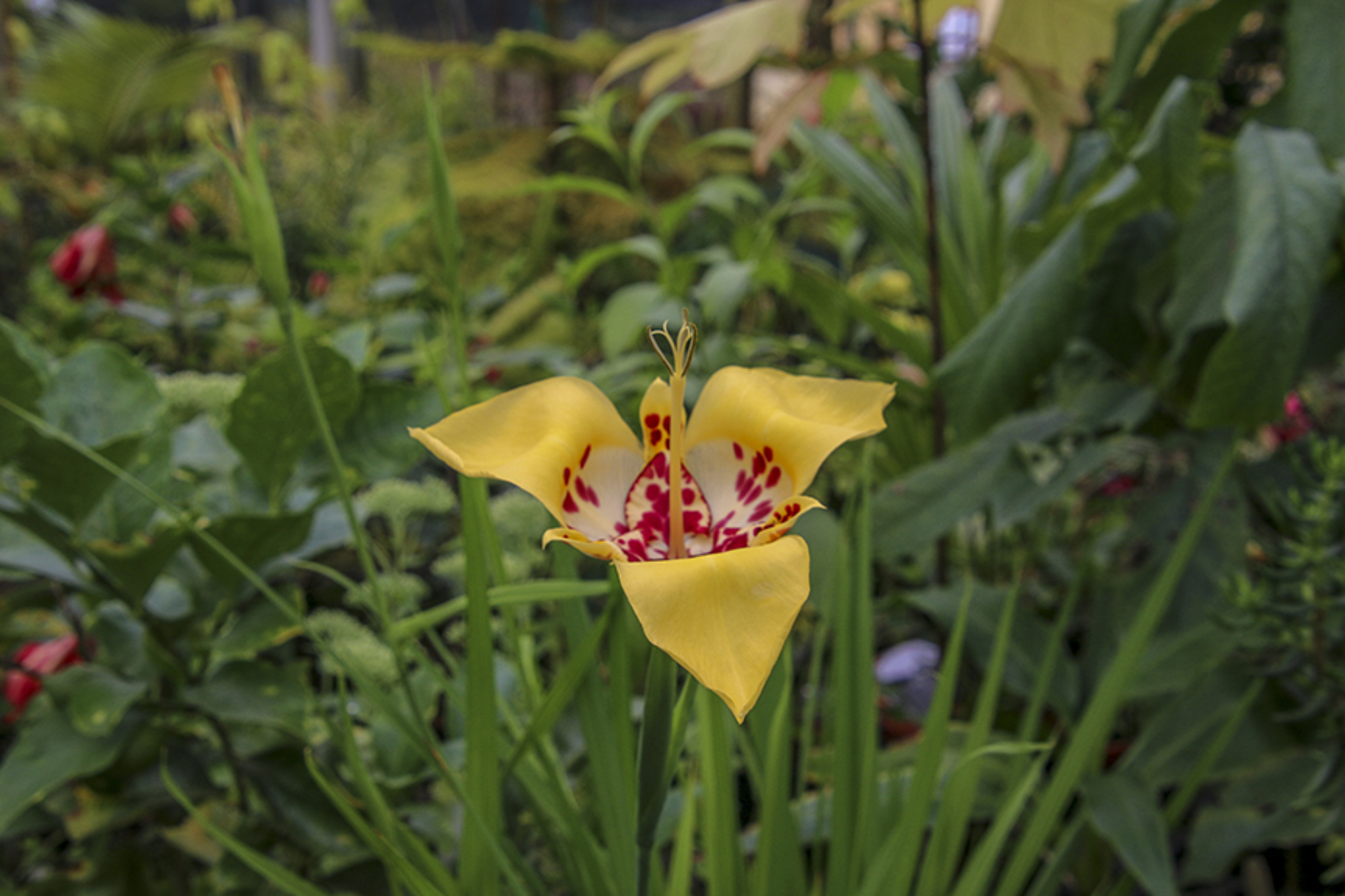
For years I have not known what this plant was. It appears like a weed in pots in the greenhouse, amongst the palms, colocasias, bananas, cycads. Many times I pulled it out and when I did so, I noticed there were no roots. Well, lo’ and behold, one day a visitor comes by and says, “Psilotum nutum”.
I look at him funny and say “same to you.” He says, “No, you have it. It’s a primitive fern, very difficult to find. After he points it out and I see what he is talking about, I’m overjoyed. It isn’t a weed, but more ancient than leaves, flowers and seeds. Like cycads, Psilotum nutum was in existence when dinosauers walked the earth.
Apparently it can be found in Florida and parts of Texas, requiring tropical or sub-tropical conditions. However, I have found it in palm pots out in the yard that were subject to temperatures in the 30’s. Never have I seen it in the ground. Here in the greenhouse, it is always with another plant, so I wonder if isn’t symbiotic in nature. According to biologists it has the xylem for water transport, but no phloem for sugar transport. The stems are triangular and at times sport small yellow heads, which must be spores vessels.


